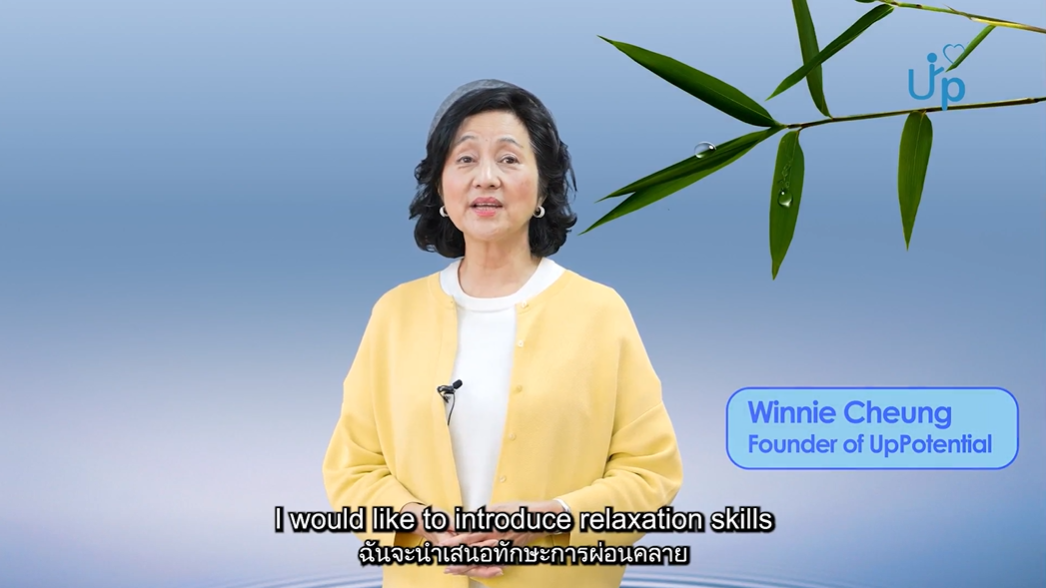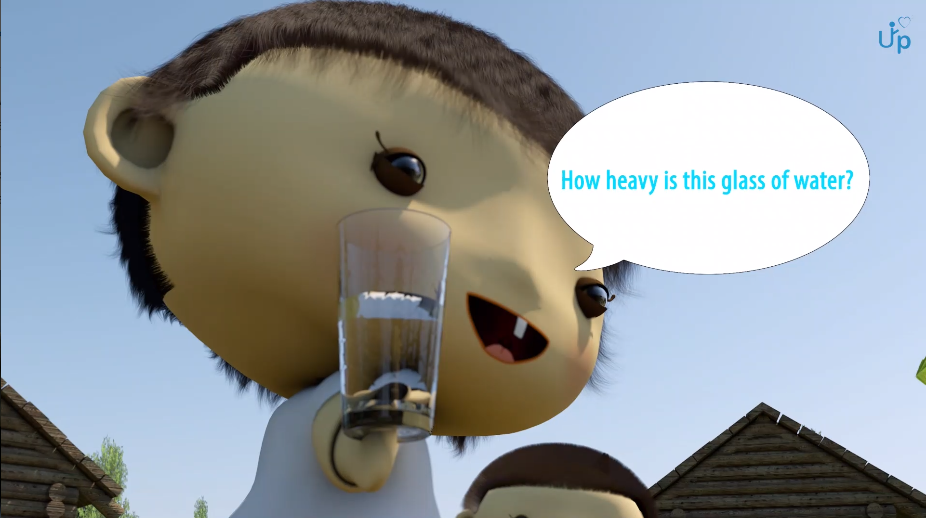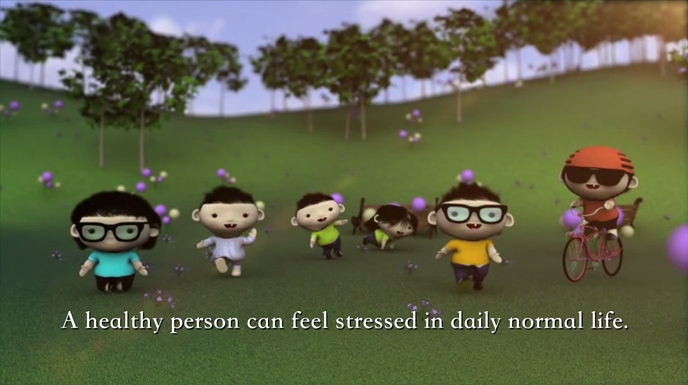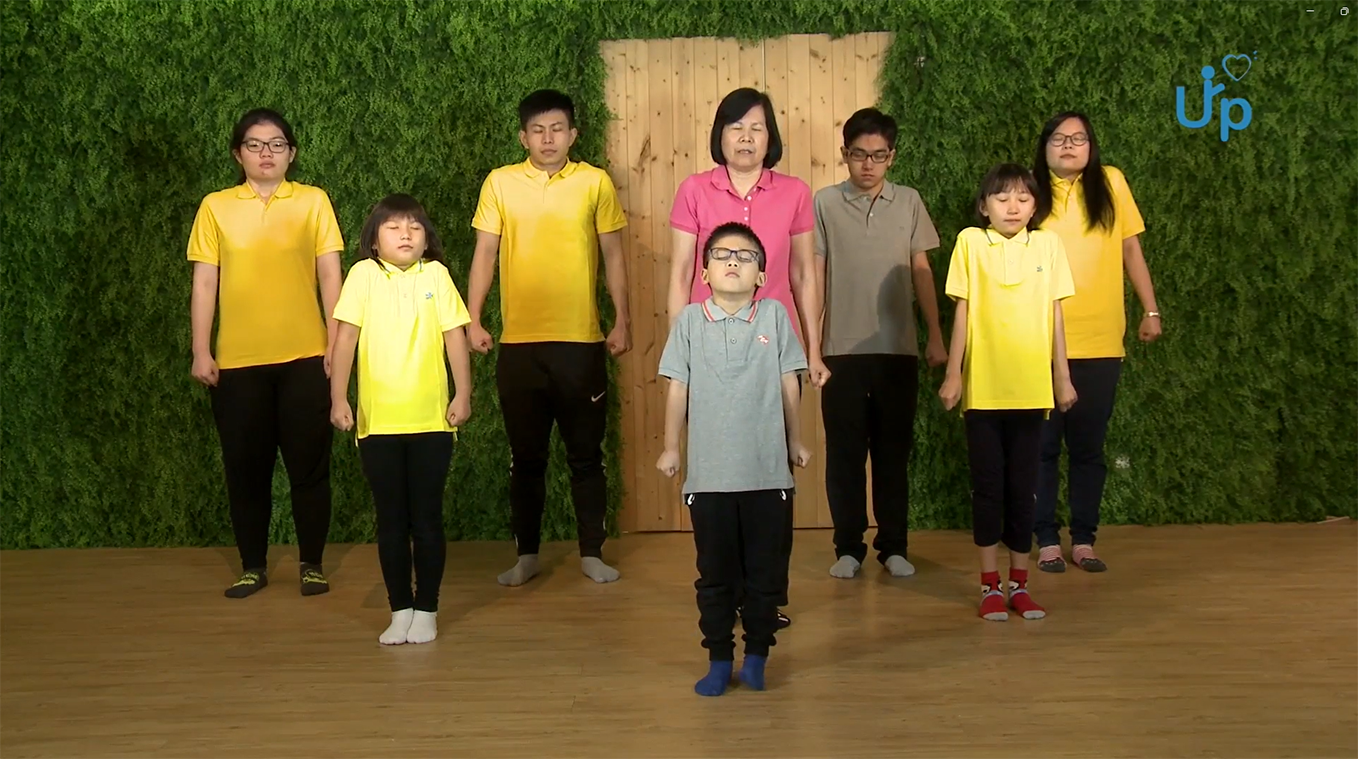Lesson 2: Relaxation Exercise (Part 1)
Teaching Objectives:
Introduce students to various relaxation exercises that can be used as coping skills to address life challenges. Teaching students how to utilize these skills effectively aims to lower their stress levels, relieve tension, and promote the development of a 'relaxation response'. Relaxation exercise can positively impact their career development by enabling them to worry less and focus more on their professional growth.
Relaxation Exercise Introduction
Teaching guide
2. Ask the student "what did they get from the video."
3. Highlight the key points:
- Compares the feeling of helplessness and anxiety to being in the water and searching for a life buoy.
- Students will explore relaxation exercises that can act as a "life buoy" during challenging times.
- It is essential to understand and practice these exercises to maximize benefits.
- Encourage students to select the exercises that best suit their needs and are easy to practice.
Put the glass down
The story uses a glass of water as a metaphor for our stress. If we hold a glass of water for a short period of time, it may not affect us much, but if we hold it for a long period of time, it will cause us distress. This story can inspire us to let go of our worries and avoid increasing our stress levels. We can try the breathing skills we have learnt in this class to relieve negative emotions and stress.
Teaching guide
2. Discuss the follwoing questions with students (answers can be found below the video):
- What was the first question the teacher asked the Scouts?
- How did the Scouts respond to the teacher's question "How would it feel to hold a glass of water for a minute?"
- How did the Scouts answer the teacher's question "What happens if you hold a glass of water all day?"
- What can we do to avoid suffering?
- What is the analogy of using a glass of water to describe something in life?
- What does this video inspire us to do?
- It’s important to remember to let go of your stresses and worries.
- No matter what happens during the day, as early in the evening as you can, put all your burdens down and always remember to put the glass down before you go to bed!
- Don’t carry them with you through the night and into the next day. .
- If you still feel the weight of yesterday’s stress, it’s a healthy sign that it’s time to put the glass down
Q&A Section:
Question 1: What was the first question the teacher asked the Scouts?
Answer 1: How much does a glass of water weigh?
Question 2: How did the Scouts respond to the teacher's question "How would it feel to hold a glass of water for a minute?"
Answer 2: Scouts answered " It's all right."
Question 3: How did the Scouts answer the teacher's question "What happens if you hold a glass of water all day?"
Answer 3: Scouts answered "The arm will be numb and if the muscles are subjected to too much pressure, it could be paralysed at this rate."
Question 4: What can we do to avoid suffering?
Answer 4: "Put the glass down."
Question 5: What is the analogy of using a glass of water to describe something in life?
Answer 5: Stress and worry in life are like a glass of water. If you suffer from them for a short period of time, they may not have any effect. However over a longer period of time, these stresses and worries can start to take a toll on us, and if they go on for a little longer, they can become a serious nuisance.
Question 6: What does this video inspire us to do?
Answer 6: It inspires us to let go of our worries and avoid increasing stress.
Relaxation Exercise in out daily lives
Let's take a look at the benefits of relaxation exercise and discover the exercises we often come across in our daily lives that can help relieve tension and stress.
Teaching guide
2. Discuss the following questions with students (answers can be found below the video):
- Tell us the benefits of the relaxation exercise mentioned in the video.
- Give an example of the relaxation exercise mentioned in the video
Q&A Section:
Question 1: Tell us the benefits of the relaxation exercise mentioned in the video.
Answer 1: Calm your mind and emotions
Question 2: Give an example of the relaxation exercise mentioned in the video
Answer 2: Yoga, Tai Chi, Walking, Meditation, Stretching, Cycling
The benefits of Relaxation exercise
Teaching guide
2. Ask the student to read out the points one by one

Group discussion
Divide 4-5 students into a group with 1 student coach; each group shares its findings after the discussion.
Teaching guide
2. Instruct the student coaches to lead their group in discussing the following questions.
3. Allow 5-10 minutes for group discussion, and then have each group share their findings.
4. Applaud one group after they finish sharing and proceed to the next group.
|
Have you done any exercise in the last seven days? |
|
|
What is the exercise you have done? |
|
|
What do you feel after the exercise? |
|
|
What is your favourite exercise/sport? |
|
Video demonstration of muscle relaxation techniques
A simple movement, combined with breathing, can instantly help us to adjust to a tense or agitated mood. It allows us to feel the difference between tension and relaxation.
Teaching guide
2. The teacher invites student coaches to demonstrate the exercise in front of other students.
3. Point out areas that need attention:
- Do it slowly
- When you tighten up, hold it for a few seconds and then relax
- Repeat 5 times
- Your muscles can feel the difference between tightening up and relaxing.
4. Afterward, teacher invites students to share their feelings.



